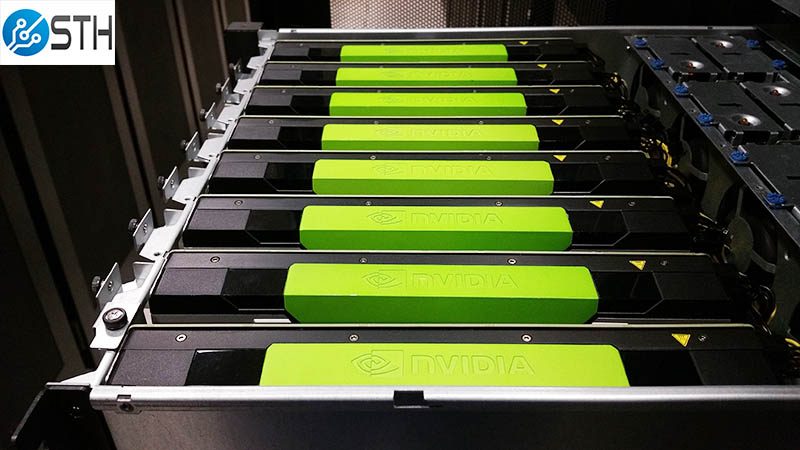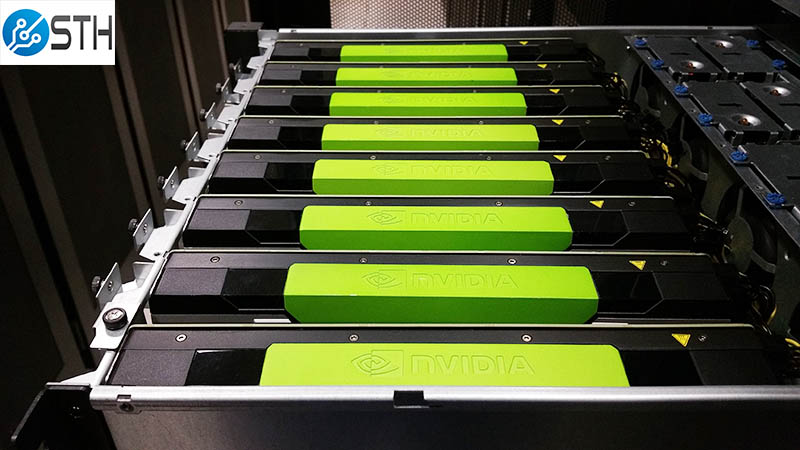Today NVIDIA announced a new version of its GRID software. It also announced the NVIDIA Tesla M10 GPU. The Tesla M10 combines four Maxwell generation GPUs with 640 CUDA cores and 8GB RAM each. From what we can tell, these cards are similar to the NVIDIA GRID M40 cards we have been using. The Tesla M10 seems to have twice the RAM per GPU (8GB per GPU and 32GB total v. 4GB per GPU and 16GB total.) We have been very impressed with the NVIDIA GRID M40 so we would expect very similar performance from the Tesla M10. We do wish that NVIDIA would keep the GRID brand for VDI GPUs and the Tesla brand for compute focused GPUs. That would keep product naming much cleaner.

Expected availability of the NVIDIA Tesla M10 is August this year.
Here is the press release from NVIDIA.
NVIDIA today opened the path toward virtualizing all enterprise applications with the introduction of NVIDIA GRID™ with the new NVIDIA® Tesla® M10 GPU.
The offering provides the industry’s highest user density — supporting 64 desktops per board and 128 desktops per server — so businesses can deliver virtualized desktops to all of their employees at an affordable cost.
The NVIDIA GRID software lets enterprises simplify deployments of virtual applications, desktops and workstations to meet all use cases and workloads. It provides a great user experience for every modern business application, such as Outlook, Office 2016, web browsers, Adobe Photoshop and the Windows 10 operating system.
In addition, the offering eases enterprise adoption through a flexible subscription model that allows organizations to balance capital and operating expenses while enjoying the lowest total cost of ownership. Ongoing software updates provide the latest innovations to customers.
Exploding Growth of GPU-Accelerated Business Applications
The use of GPU-accelerated business applications by office workers is exploding. The percentage of accelerated apps has more than doubled in the past five years, with half that growth coming in the first months of 2016 alone, according to SysTrack Community data provided by Lakeside Software. To provide the best user experience, these applications increasingly use OpenGL and DirectX APIs, as well as graphics technology from the data center through to the device. To achieve the level of experience users require and have come to expect, virtual environments need access to the GPU.
“High-performing knowledge workers require high-performing business applications for maximum productivity. That requires GPU acceleration,” said Jim McHugh, vice president and general manager of the NVIDIA GRID business at NVIDIA. “With the highest user density in the industry, NVIDIA GRID with the Tesla M10 makes it easy and affordable for businesses to virtualize every application for knowledge workers with no compromise in performance.”
“While the need for advanced GPU technology has commonly been associated with the usage of 3D applications, as enterprises make the move to software like Windows 10, Office 365, and other SaaS and web apps, IT departments will increasingly seek the benefits of GPU acceleration to provide everyday business tools to all of their users,” said Robert Young, research director, IT Service Management and Client Virtualization Software at IDC.
NVIDIA GRID is the industry standard for graphics virtualization, supported by every enterprise OEM with full compatibility with every PC application. By working with offerings from Citrix and VMware, the leading virtualization vendors, it delivers an amazing experience with virtual applications or remote desktop session host for less than $2 a month per user and to virtual PCs for less than $6 a month per user.
The Tesla M10 joins the Tesla M6 and M60 as options for NVIDIA GRID, making GRID the only solution on the market that meets the performance needs of all enterprise users — from the most demanding designers and engineers to knowledge workers.
- Increased user density per server: The Tesla M10 delivers a superior experience at the highest user density on the market, allowing up to 64 users per board or up to 128 users per server with just two boards. This enables enterprises to expand service to more employees at a lower cost per user.
- Expanded software offering: NVIDIA GRID comes in three software editions to meet different user needs. For office workers, NVIDIA GRID Virtual Applications (vApps) and NVIDIA GRID Virtual PC (vPC) deliver Windows 7, Windows 8 and Windows 10 virtual desktops and PC applications with native user experience. NVIDIA GRID Virtual Workstation (vWS) delivers the power of a workstation from the data center, so designers, engineers and architects are free to work on their professional graphics applications from anywhere.
- Flexible subscription model, ongoing updates: With ongoing innovation and feature updates in the software and the data center GPUs that power NVIDIA GRID, customers benefit from increased value through the life of the deployment. To ease adoption, NVIDIA is offering a new annual subscription model that offers customers access to the latest upgrades along with enterprise-class support and maintenance. Customers can buy up to three years of annual subscription upfront. Alternatively, they can choose the perpetual license model.





http://www.anandtech.com/show/9574/nvidia-announces-grid-20-tesla-m60-m6-grid-cards
“Second of all, these cards are being released under the Tesla brand and not the GRID brand. Tesla has previously been reserved for pure compute cards (e.g. Tesla K80), but since VDI is just another GPU application at this point – i.e. there are no appreciable hardware differences between a VDI card and a pure compute card – NVIDIA would appear to be converging all of their server cards under the Tesla brand.”